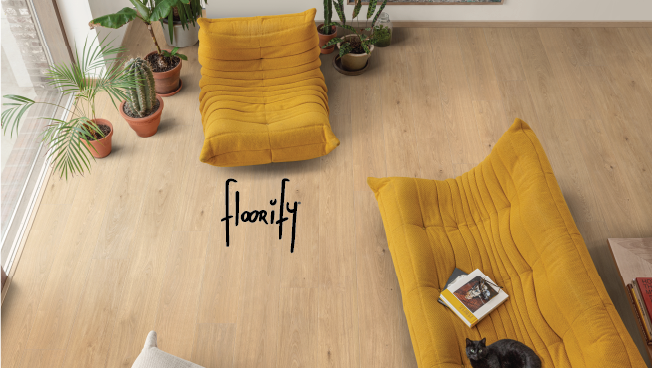- Category: News
WHAT IS THE DIFFERENCE BETWEEN LVT AND RVT FLOORING?

Both LVT and RVT are considered affordable alternatives to real wood flooring. They are also durable and relatively quick and easy to install on almost any surface, even without preparation. However, there are some important differences between them.
RVT Flooring (Rigid Vinyl Flooring) is the latest revolution in vinyl flooring, designed to meet the demands of modern lifestyles. It consists of four layers compressed together to create a single, homogeneous floor. On top, there is a matte layer made of PU (1) which is highly resistant to stains. Beneath this layer, there is an additional transparent protective layer, 0.55 mm thickmm (2), which provides enhanced resistance to wear. Next comes the decorative PVC high-quality film (3) providing a highly aesthetic finishing effect of wood, ceramic, or terrazzo. In terms of structure, the floor may resemble a classic vinyl floor. The secret, however, lies in the unique sound-absorbing, waterproof, and highly durable homogeneous next-generation core made of PVC and LIMESTONE (4) which lies beneath these layers. The core remains completely stable even under extreme conditions and is highly resistant to impacts. Thanks to this core, the connection of RVT planks is stronger and offers exceptional cohesion compared to traditional vinyl flooring.
Before installing the RVT planks, the underlayment is laid Underlay 2mm (5) with a thickness that helps level the floor while also providing superior sound insulation, vibration reduction, and improved quality in the final flooring finish.
From the kitchen and bathroom to the bedroom and living room, vinyl flooring has undoubtedly become the new trend in high aesthetics, establishing itself as one of the most widely used types of flooring.




RVT floors are manufactured in accordance with the EN14041 standard and usage class 33, offering a warranty of up to 25 years for their quality.
